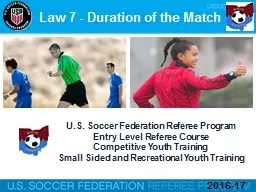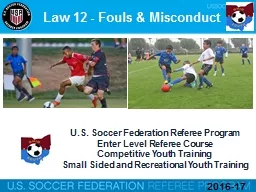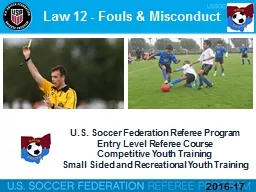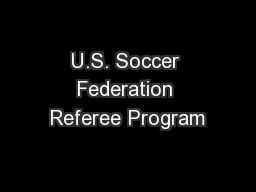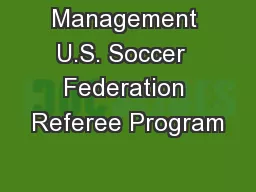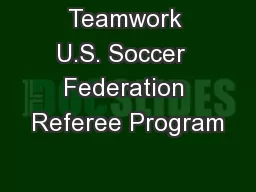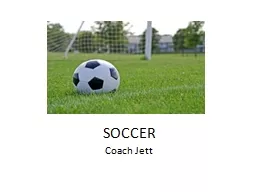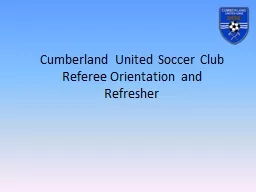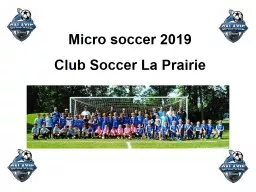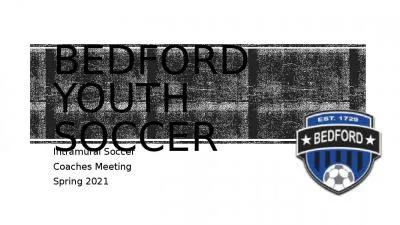PPT-U.S. Soccer Federation Referee Program
Author : giovanna-bartolotta | Published Date : 2018-03-19
Entry Level Referee Course Competitive Youth Training Small Sided and Recreational Youth Training Law 7 Duration of the Match 201617 Periods of Play Games at the
Presentation Embed Code
Download Presentation
Download Presentation The PPT/PDF document "U.S. Soccer Federation Referee Program" is the property of its rightful owner. Permission is granted to download and print the materials on this website for personal, non-commercial use only, and to display it on your personal computer provided you do not modify the materials and that you retain all copyright notices contained in the materials. By downloading content from our website, you accept the terms of this agreement.
U.S. Soccer Federation Referee Program: Transcript
Download Rules Of Document
"U.S. Soccer Federation Referee Program"The content belongs to its owner. You may download and print it for personal use, without modification, and keep all copyright notices. By downloading, you agree to these terms.
Related Documents

